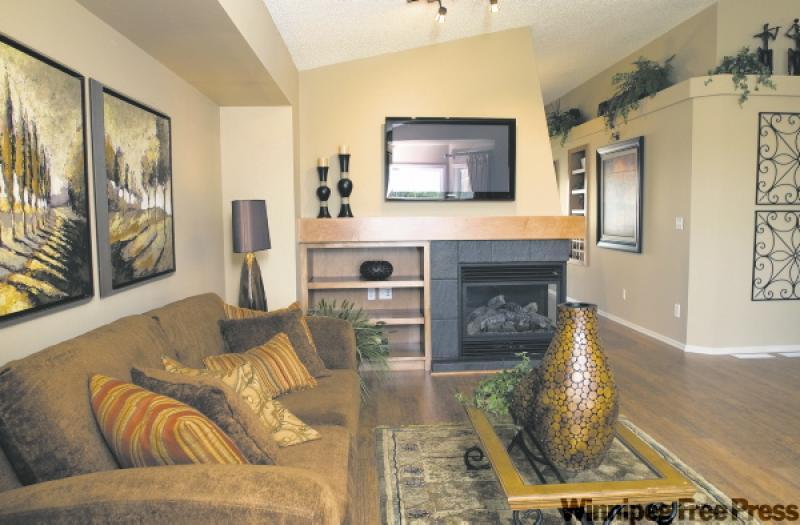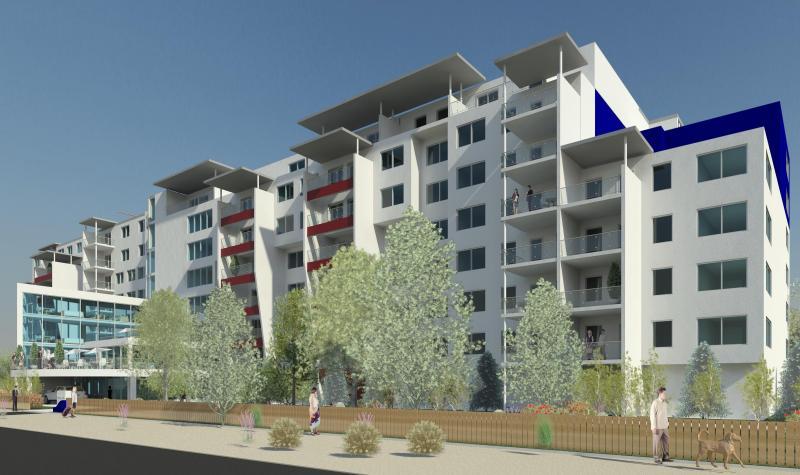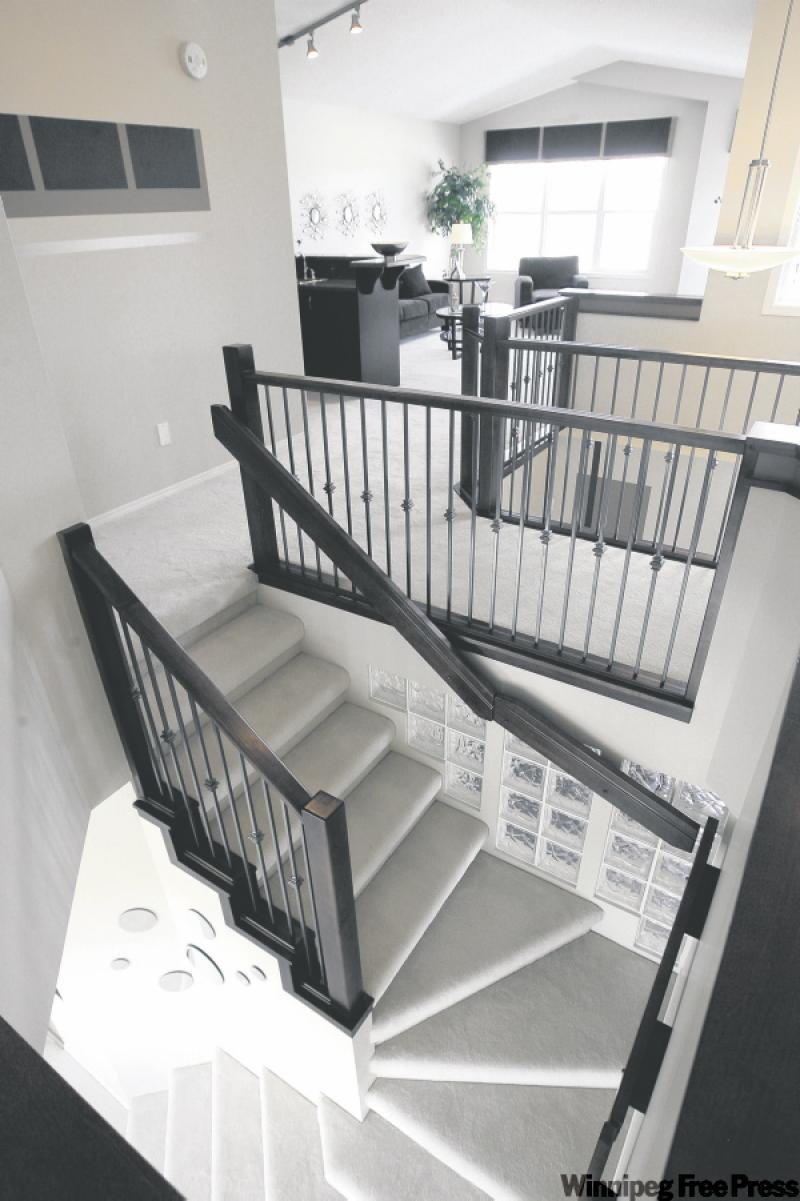New Homes
New Homes
AROUND THE MARKET: Consumers lining up for condominiums
There's no question the condo craze has hit Manitoba. Just drive around the city or flip through the pages of this section and you'll see a host of new condominium projects that are continuously popping up. Condominiums now represent about 12 per cent of the single family housing market in Winnipeg and that number is on the rise.
"The growth is exponential," says Doug Forbes, president of the Manitoba chapter of the Canadian Condominium Institute (CCI) and a member of the national board.
To put it into perspective, condominium living is relatively new to the Manitoba market. Condos were first introduced in Winnipeg in the late 1960s/early 1970s. By 1998, there were about 400 condominium projects here. Now, only 10 years later, there are a total of 632 condominiums registered with the Land Titles Office in Winnipeg.
"It's been huge," Forbes says of the growth in the market. "And there are a number of new projects on the go."
What factors have contributed to the growth in the condo market? According to Forbes, the condo lifestyle appeals to a lot of people. The type of condominiums available has also grown.
"They used to be geared to seniors," he notes. "Now there are many options available for varied lifestyles."
Condos have also become a lot more common. For example, Forbes says the inner city has seen a lot of growth.
Just take a look at Waterfront Drive and the numerous condominium conversion projects that are taking place in the Exchange District and other areas of downtown.
The CCI, which was formed in 1982, considers itself the voice of condominiums. With chapters across the country, the Manitoba chapter is celebrating its 25th anniversary this year. The CCI lobbies government for legislative change and things like property tax reduction. The CCI's other main focus is education and promoting the condo lifestyle.
"A lot of what we do with CCI is educating purchasers on condominium living," says Manitoba chapter vice-president Lou Anna Roberts. "What's a reserve fund, how does it work, etc?"
The CCI offers luncheon information sessions as well as one- and three-day courses that provide people with information on condominium living.
The longer courses are geared towards condo board members, who might need an education on how to organize and operate a condo.
"Unlike the rentals department, there isn't a resource for condos," notes Roberts. "There is nowhere else to get information on condos."
In addition to the classes and information sessions, the CCI has a telephone hotline and an email address for condo owners to ask questions and get information. They have also produced a guide book for condominium owners with a host of information.
The Manitoba chapter of CCI is currently trying to get a rewrite of the Manitoba Condominium Act. The last major rewrite took place back in the late 1990s and so much growth has taken place in the condo market since then.
Some of the changes the organization is lobbying for include allowing condos to be phased in, in other words allowing for a multi-stage build for a project. Roberts says the CCI also wants more disclosure and the requirement for a reserve fund study for condo conversion projects.
Celebrating a quarter-century of lobbying and education efforts, the Manitoba chapter of the CCI is also looking to grow its membership.
Only about a third of the 632 condos registered with the Winnipeg Land Titles Office are CCI members. Interested parties are invited to attend the organization's AGM, which is taking place at 6:30 p.m. on Sept. 15 at the Norwood Hotel.
For more information, contact the CCI office at 944-8954 or ccimanitoba@cci.ca.
New Homes
Safety, health big part of MHBA mandate
THE Manitoba Home Builders' Association is the oldest association of its kind in the country with its inauguration in 1937. It is their mission to be the voice of the residential construction industry in Manitoba, to provide a forum for the ongoing education of the membership with respect to technology and business practices, to achieve an environment in which the membership can operate successfully, and to promote affordability and choice in housing for all Manitobans.
Over the past decade, the residential construction industry in Manitoba has seen tremendous expansion, with more than 5,500 new homes built in 2008 alone. This significant growth contributes more than $2.4 billion - about 5.8 per cent of the GDP - to the provincial economy and creates a substantial number of jobs, as well as providing revenue from the sale of construction materials to the sale of new homes.
Because of the rapid economic growth in Manitoba, more active measures for safety and health are required. In 2003, the province's Workplace Safety and Health Division invited representatives of the MHBA's Workplace Safety and Health Committee to participate in the review of current and potential safety regulations. The common goal was and is to ensure the safety of all involved in this unique industry without interfering with production time lines.
Over the next several years, both parties worked diligently through countless meetings and residential construction site visits to view how residential houses are constructed. Many challenges occurred .
To make the necessary changes to safety on the thousands of work sites in our province required time. The phase in periods started with workers using protective equipment, installing guardrails and the creation and posting of safety signage at every work site. Safe job procedures were developed and owners, managers, supervisors and workers were required to understand the Workplace Safety and Health Act and its regulations.
Fall protection continues to be a priority as fall-related incidents can lead to serious injury. The MHBA and the province's Workplace Safety and Health Division continue to work toward incidents relating to falls. The MHBA constructed a house roof structure at its training facility which reflects real life working conditions.
Workers enrolled in fall-protection courses are able to apply practical use of the equipment under the guidance of the Construction Safety Association of Manitoba (CSAM).
In 2008, the MHBA mandated that all home builder members have a certified safety program that was in compliance with the Workplace Safety and Health Act (COR/SECOR certification). In less than two years, the number of home builders with this certification has increased to the point that now more than 70 per cent of new homes built in Manitoba are constructed by companies that are safety certified .
Today, Workplace Safety and Health conducts workplace inspections while the WCB and CSAM continue to operate education and training programs.
Through their supportive efforts, the MHBA will continue to initiate safety courses in all its programs.
This column prepared by the Manitoba Home Builders' Association
New Homes
Tools for going green
A new-home buyer has numerous options and resources when looking for green solutions. There are several labels representing various levels of energy and/or resource efficiency; most notably, the Manitoba Hydro Power Smart Program.
However, when it comes to home renovation, green solutions are not as straightforward since you're already working with an existing building.
Still, any project, large or small, can be a step towards a greener, more environmentally friendly home, according to the Homeowners' Guide to Green Renovations, recently published by the Canadian Home Builders Association.
The guide encourages homeowners to think green when they plan to make changes, not just to reduce environmental impact but also to achieve a healthier and more comfortable living space, lower monthly operating costs and increased value.
The guide encourages advance planning on three key areas: energy and water efficiency, clean indoor air and choosing resource-smart materials and products.
It also encourages the homeowner to upgrade heating systems, add insulation and choose high-performance windows. Upgrading light fixtures, on-demand water heaters, water-efficient plumbing features and green landscaping are all factors to be taken into consideration.
Of course, in order to determine how to make the largest energy impact on your home, it is useful to know where the greatest deficiencies exist. An energy audit can be performed by Manitoba Hydro evaluators. This report determines how your home uses energy, where it is being wasted and can tell you which retrofits qualify for funding under both federal and provincial programs.
These rebates are in addition to the Home Renovation Tax Credit, a recently introduced one-year program that enables the homeowner to recover up to $1,350 on a $10,000 renovation. The HRTC expires early in 2010 so, if you are thinking about renovating, the time to act is now.
If you have concerns about air quality or ventilation, ask your renovator for advice on how to alleviate these problems. Your home is a complex system and a professional knows that the various parts of your house must work together.
The Homeowners' Guide to Green Renovations also lists materials, products and techniques that contribute to keeping indoor air cleaner and healthier. All manufacturers should be able to provide clear, concise information that supports their claim of being green. Again, your professional renovator can help you through this process.
To review a list of MHBA-recommended renovators and to review the Homeowners Guide to Green Renovation, please visit the Manitoba Home Builders Association web site at www.homebuilders.mb.ca and the RenoMark site at www.renomark.ca.
This column prepared by the Manitoba Home Builders' Association








